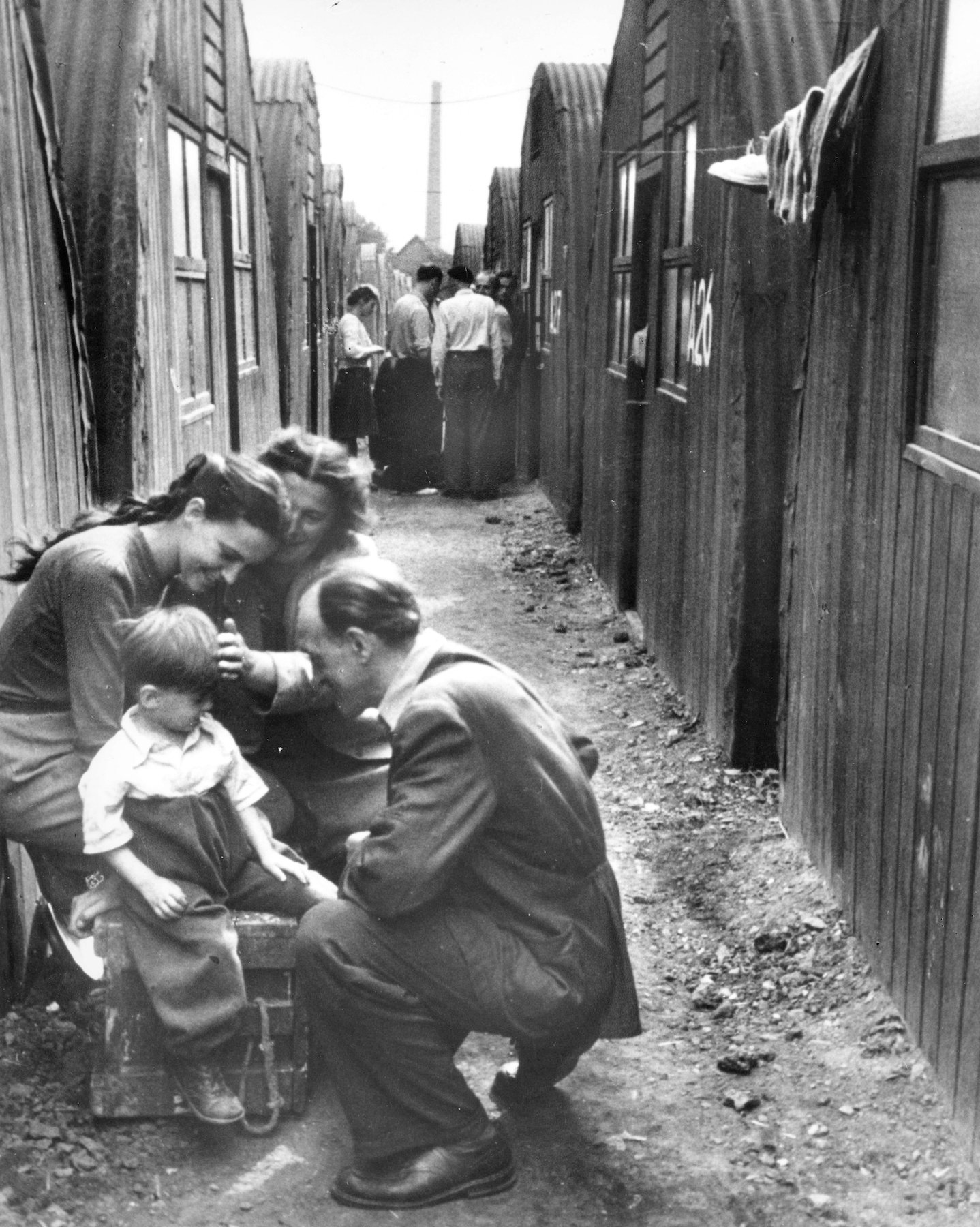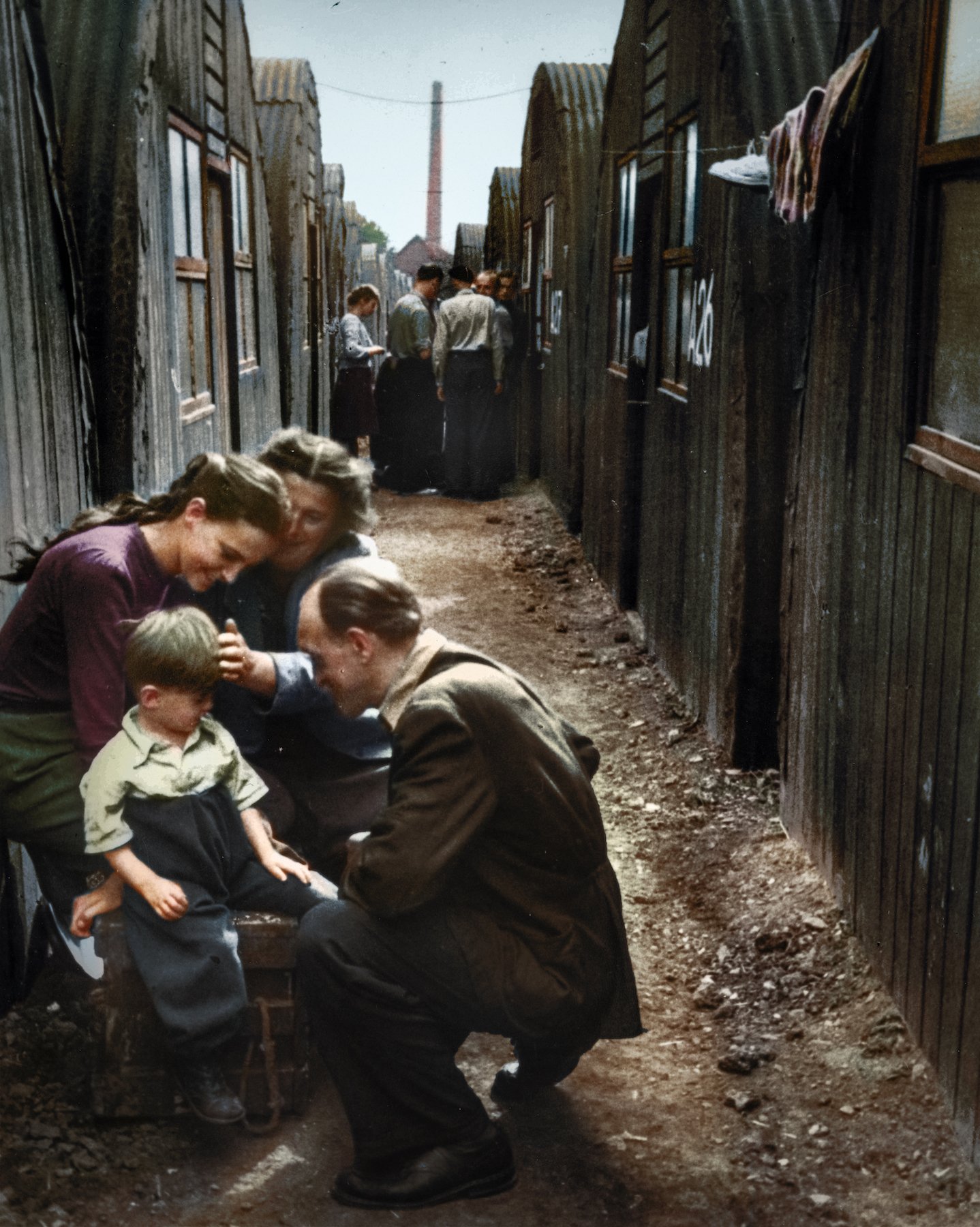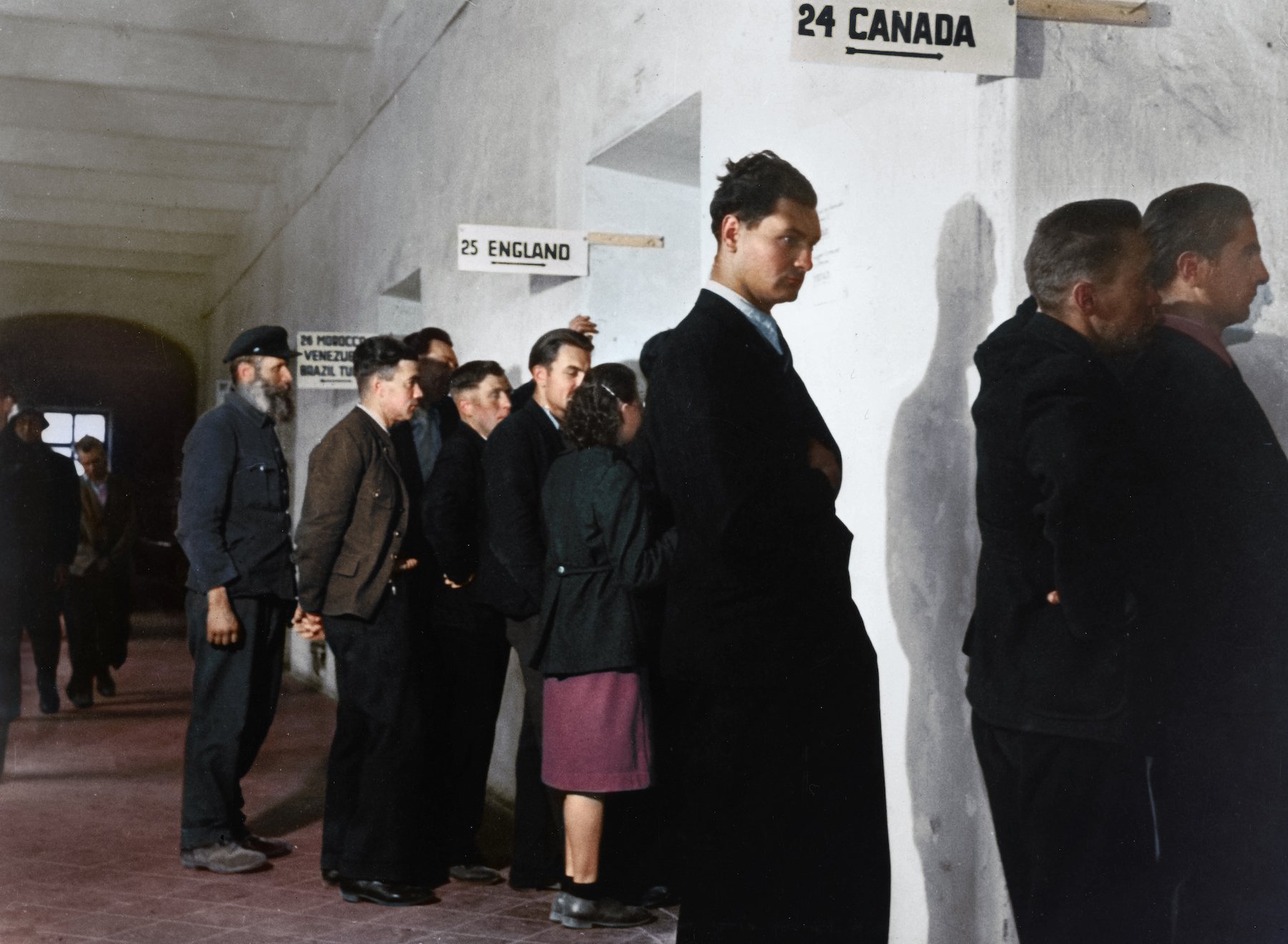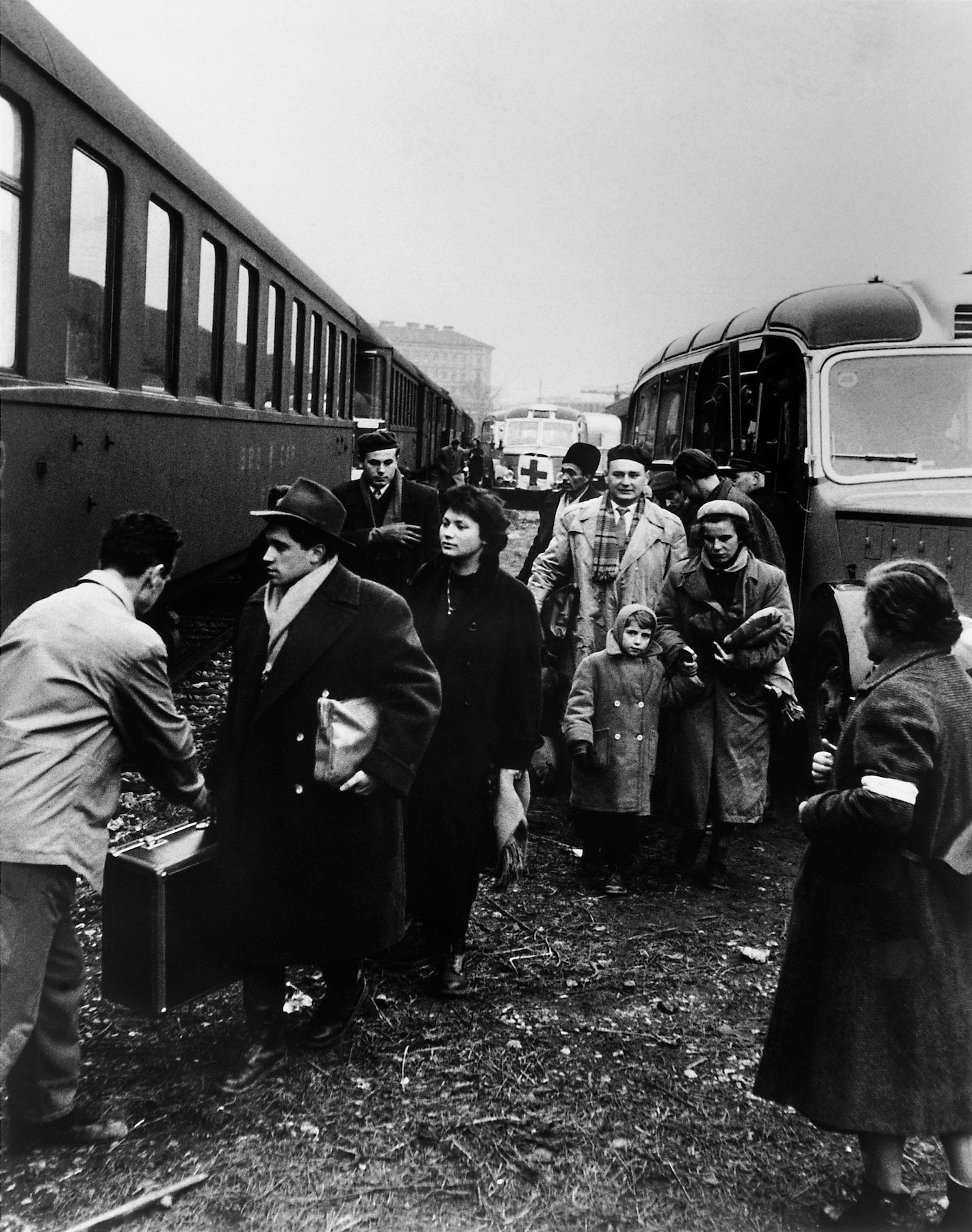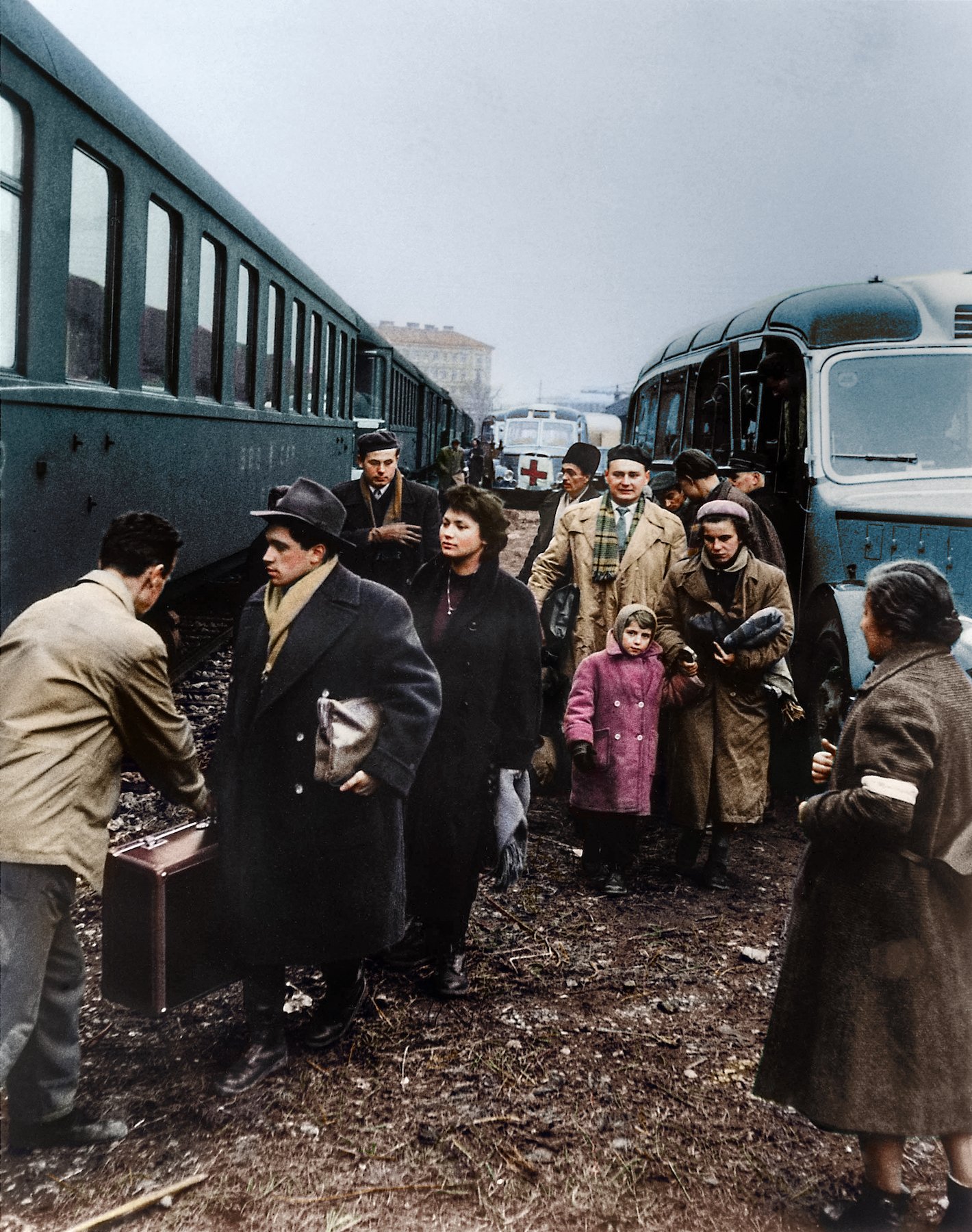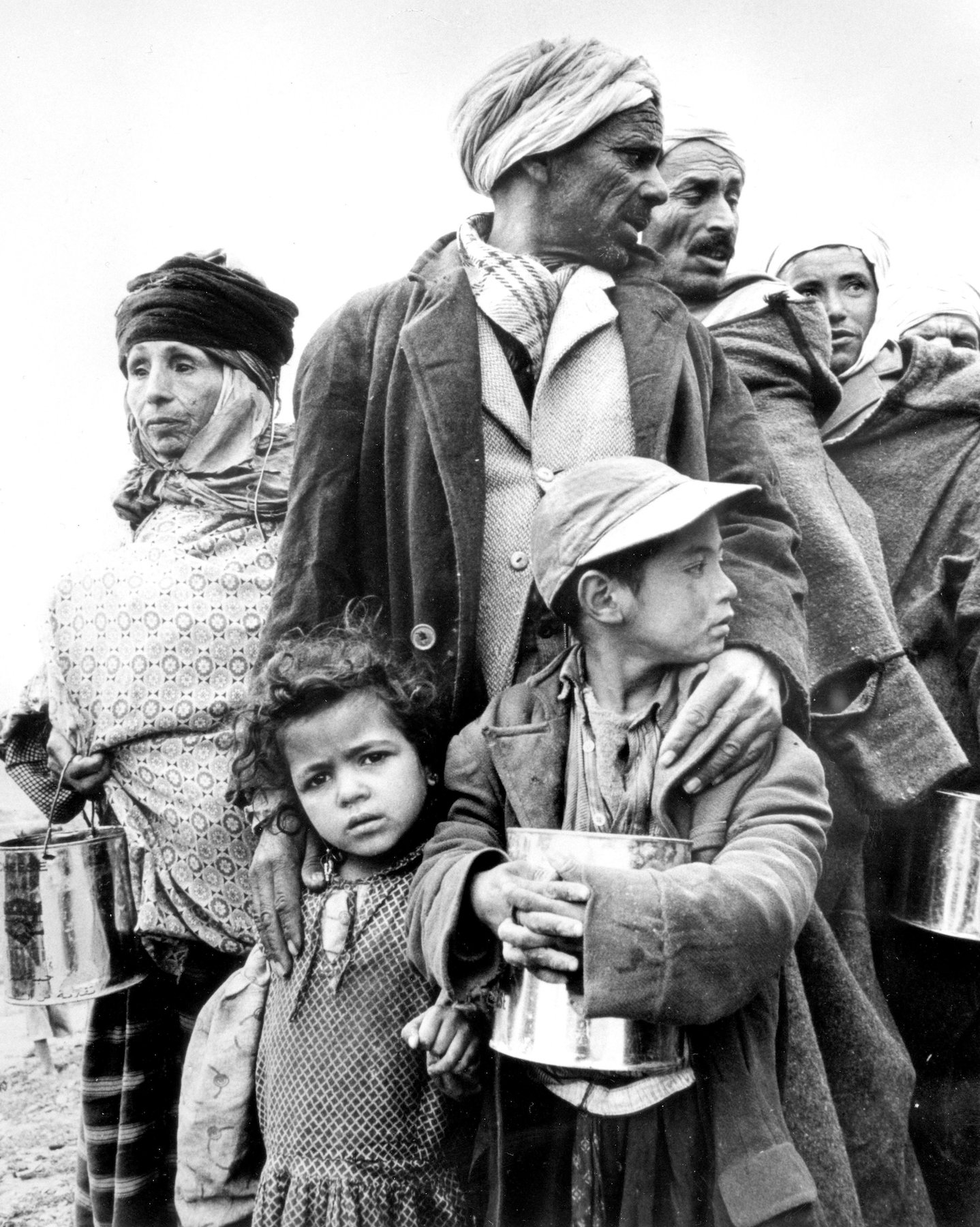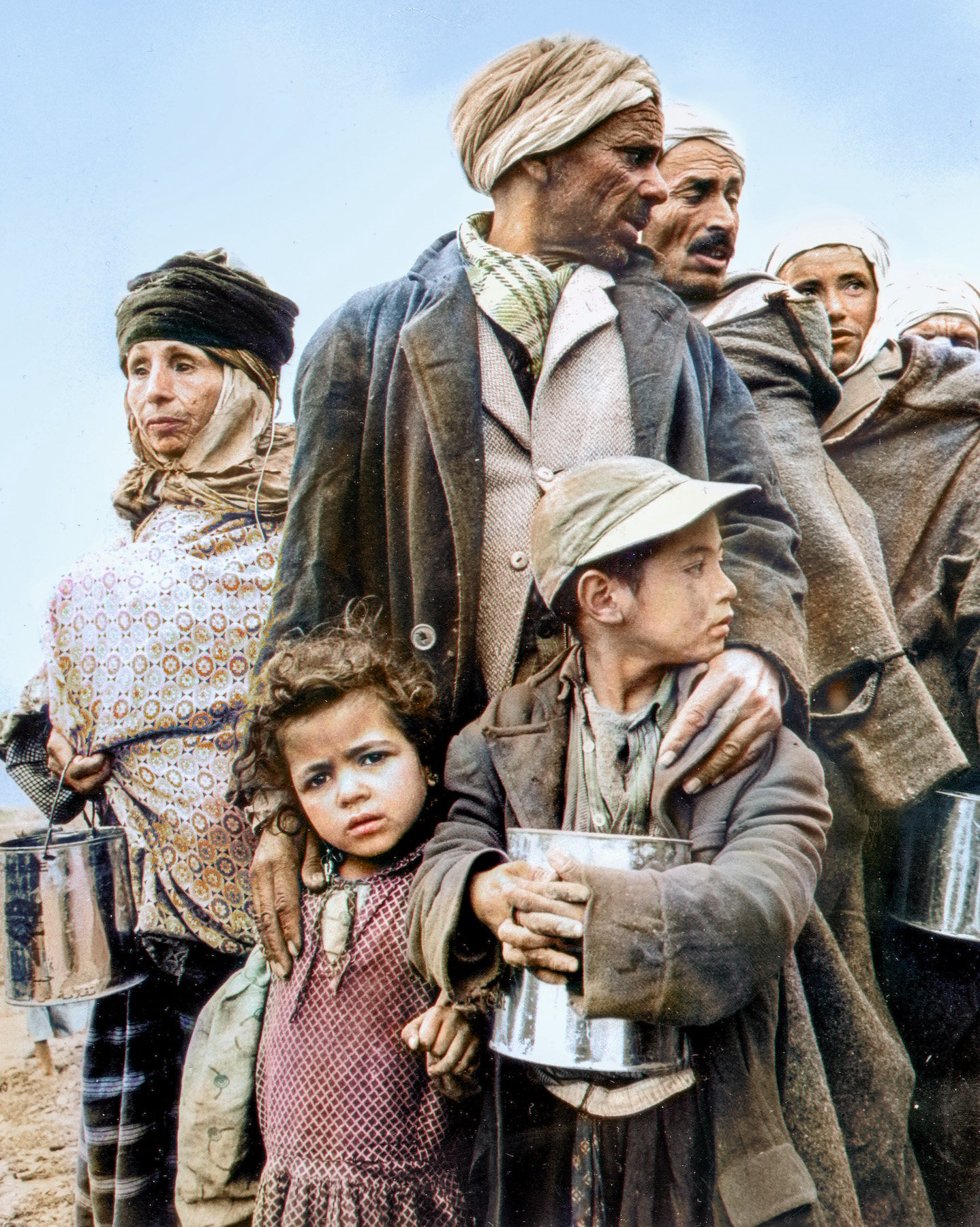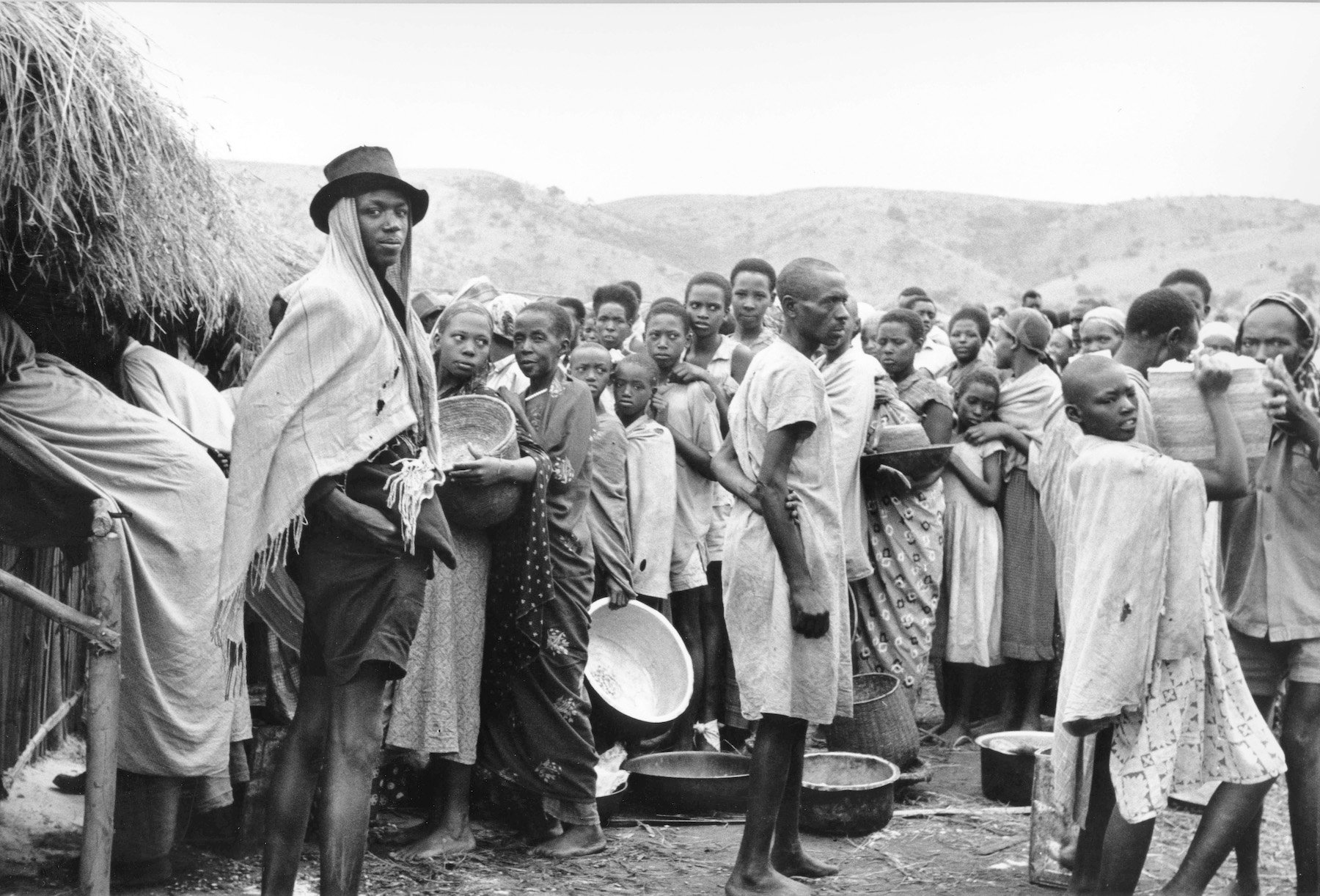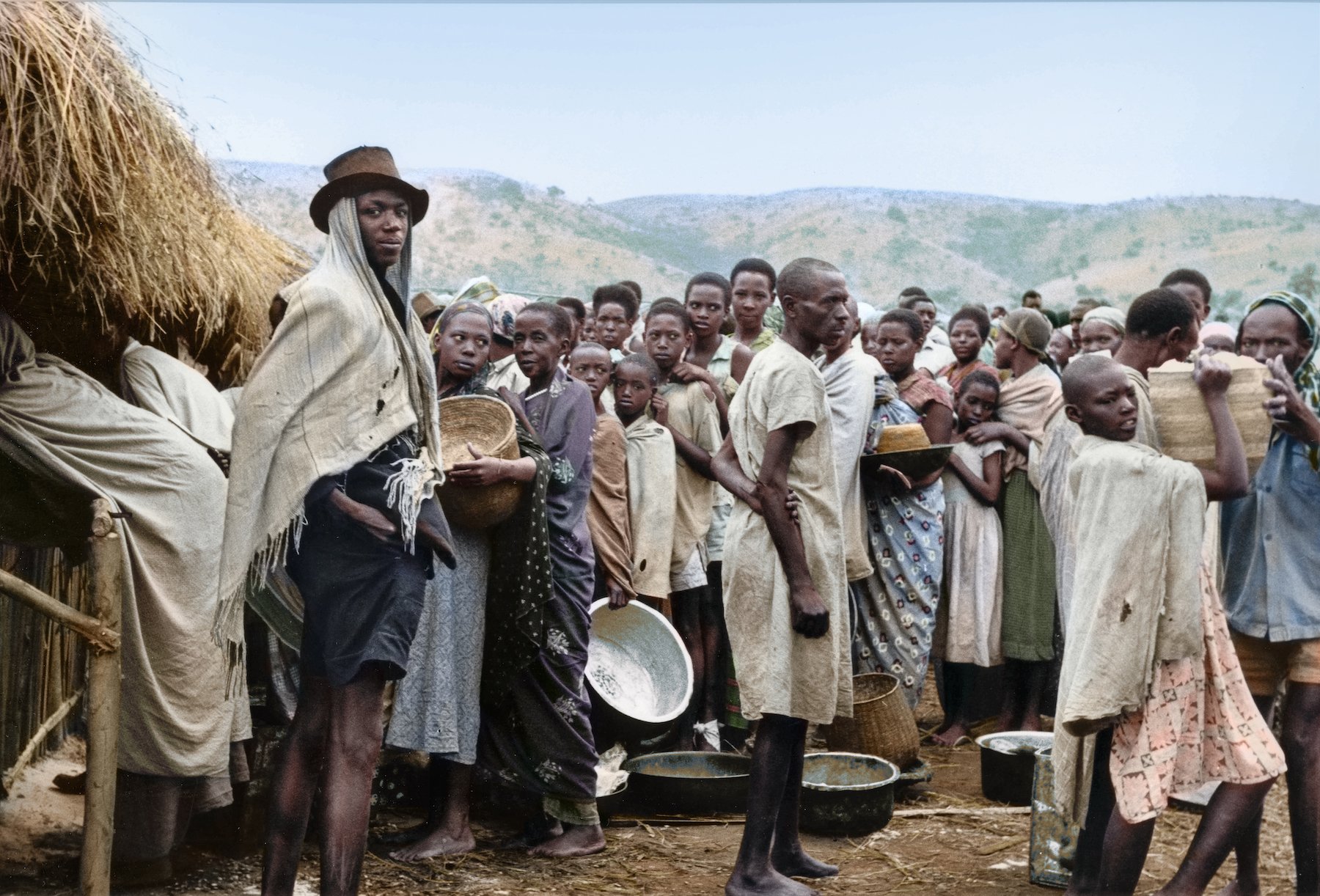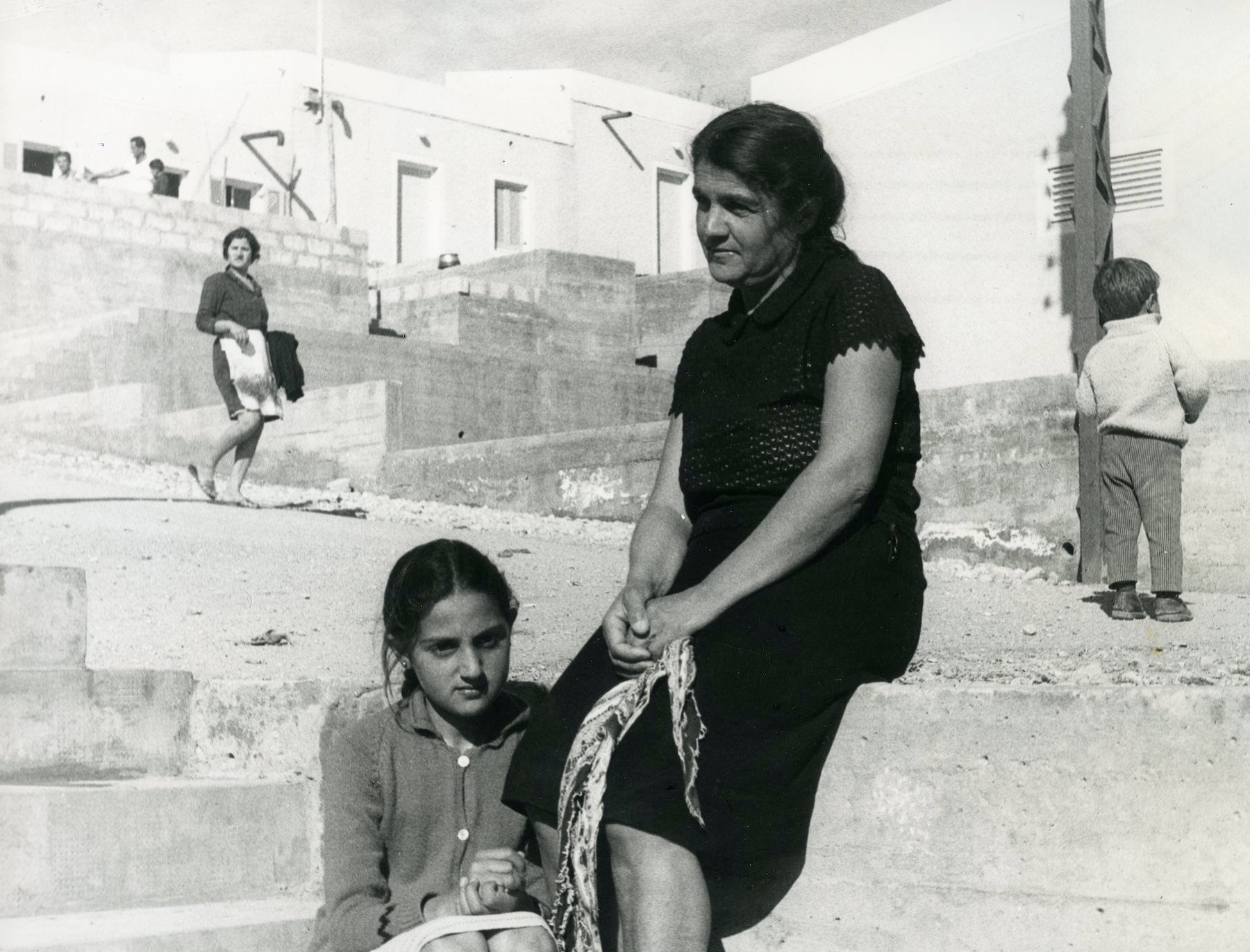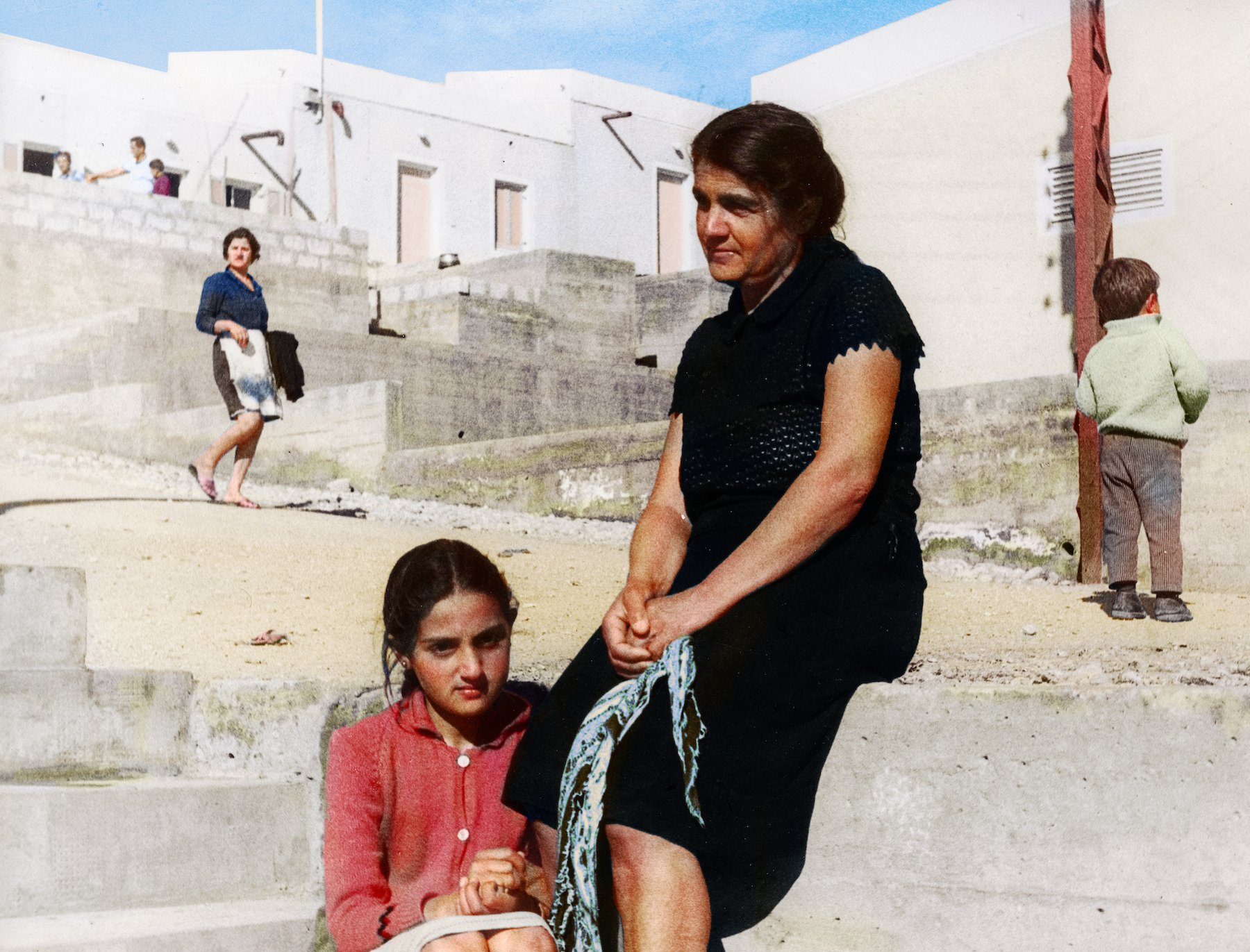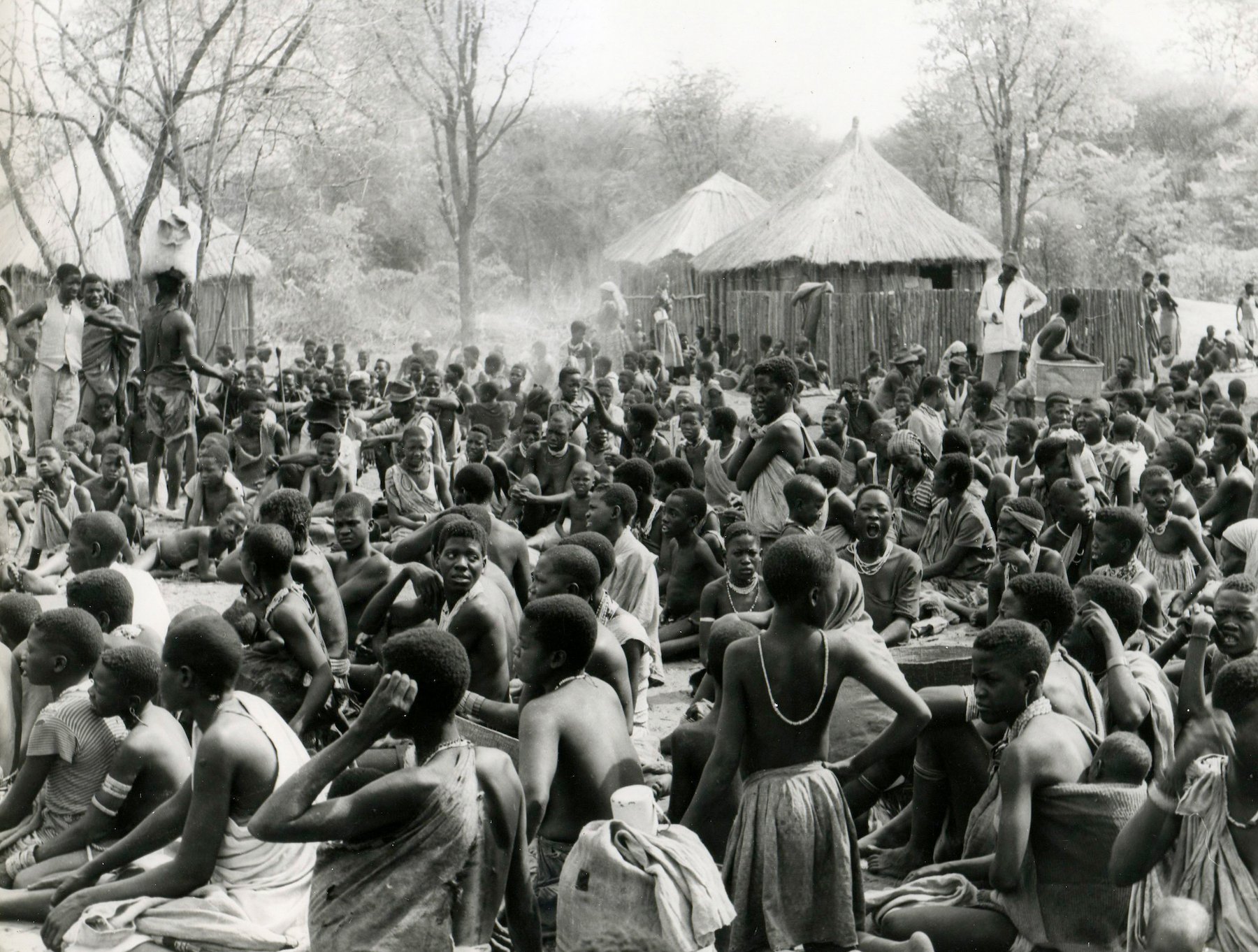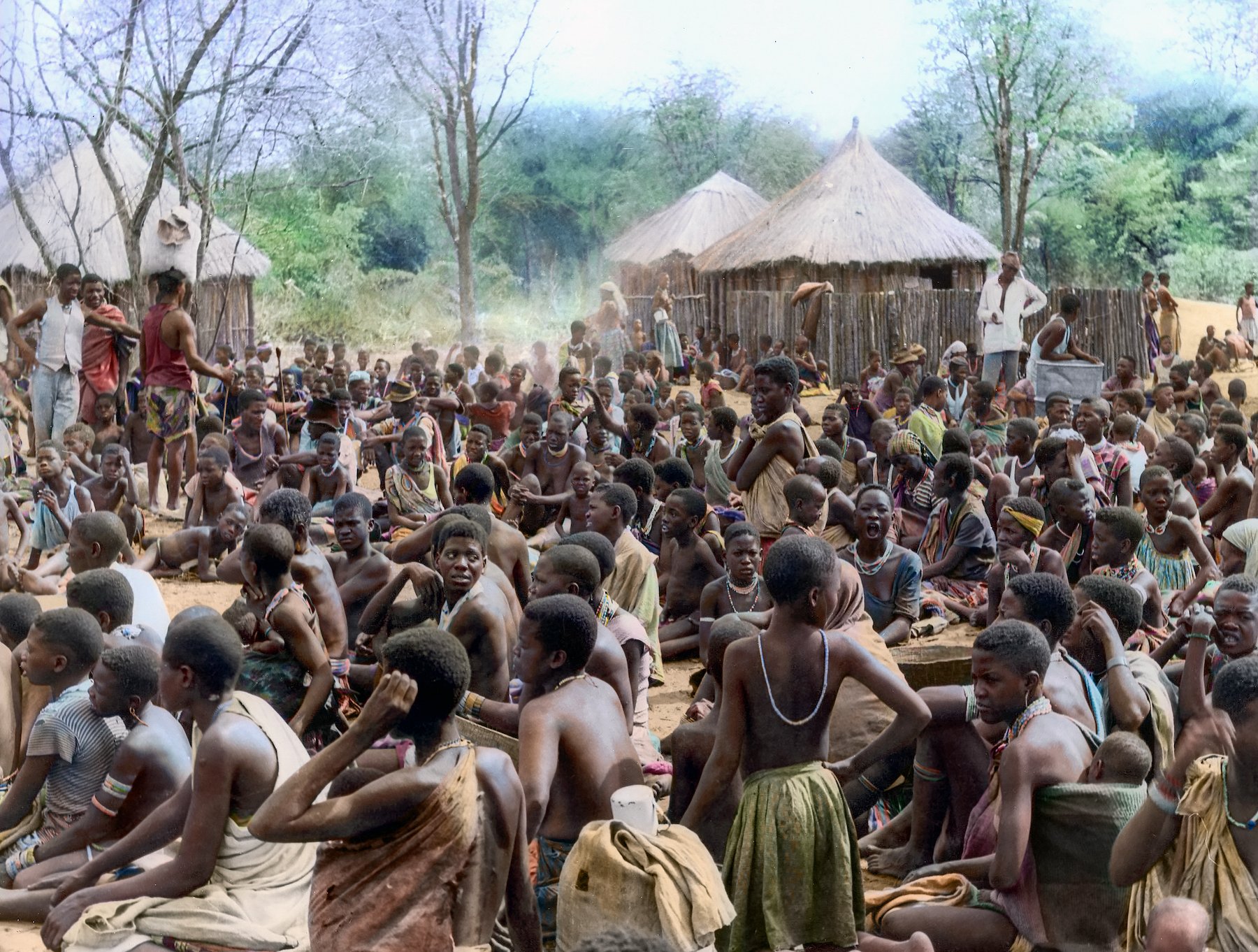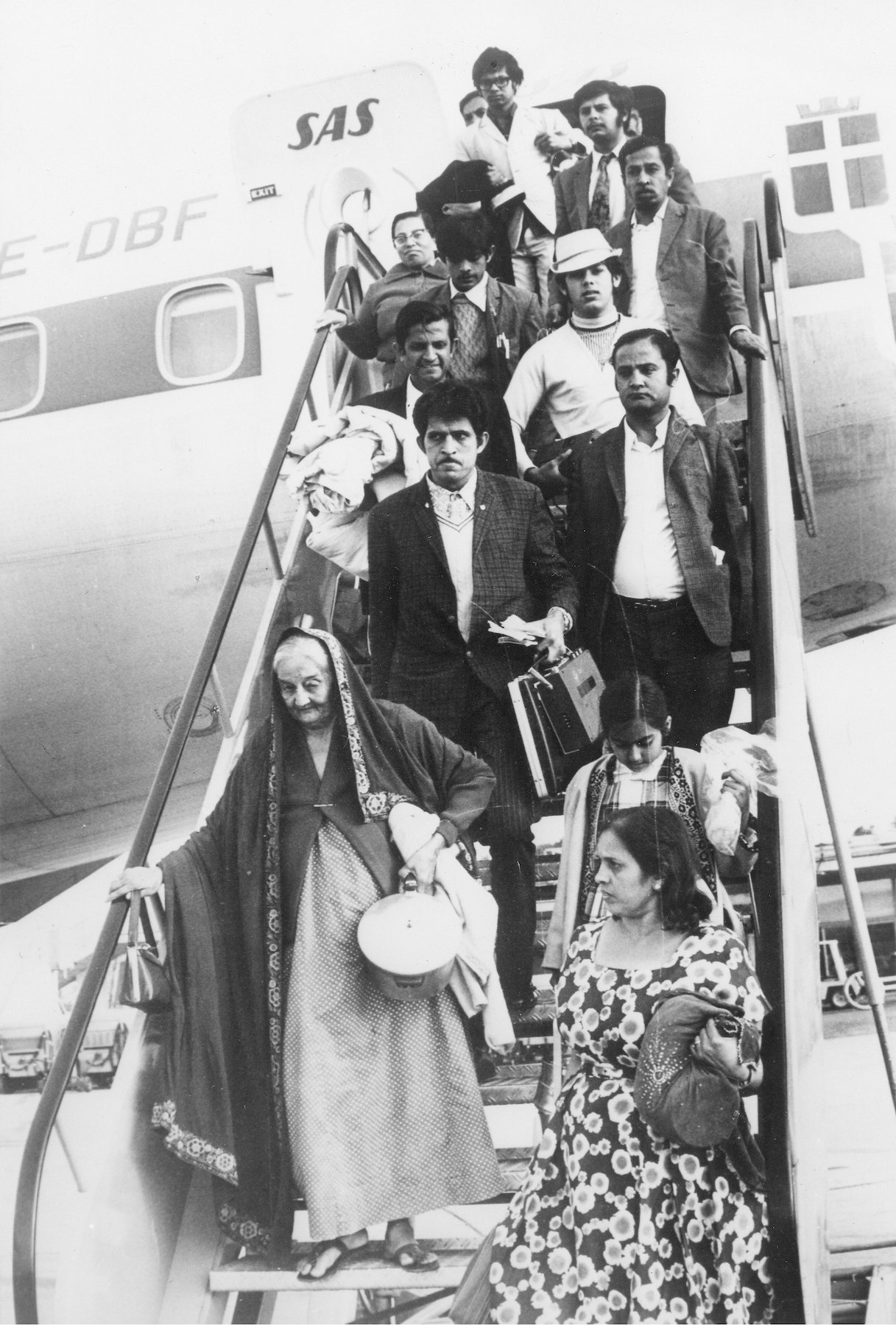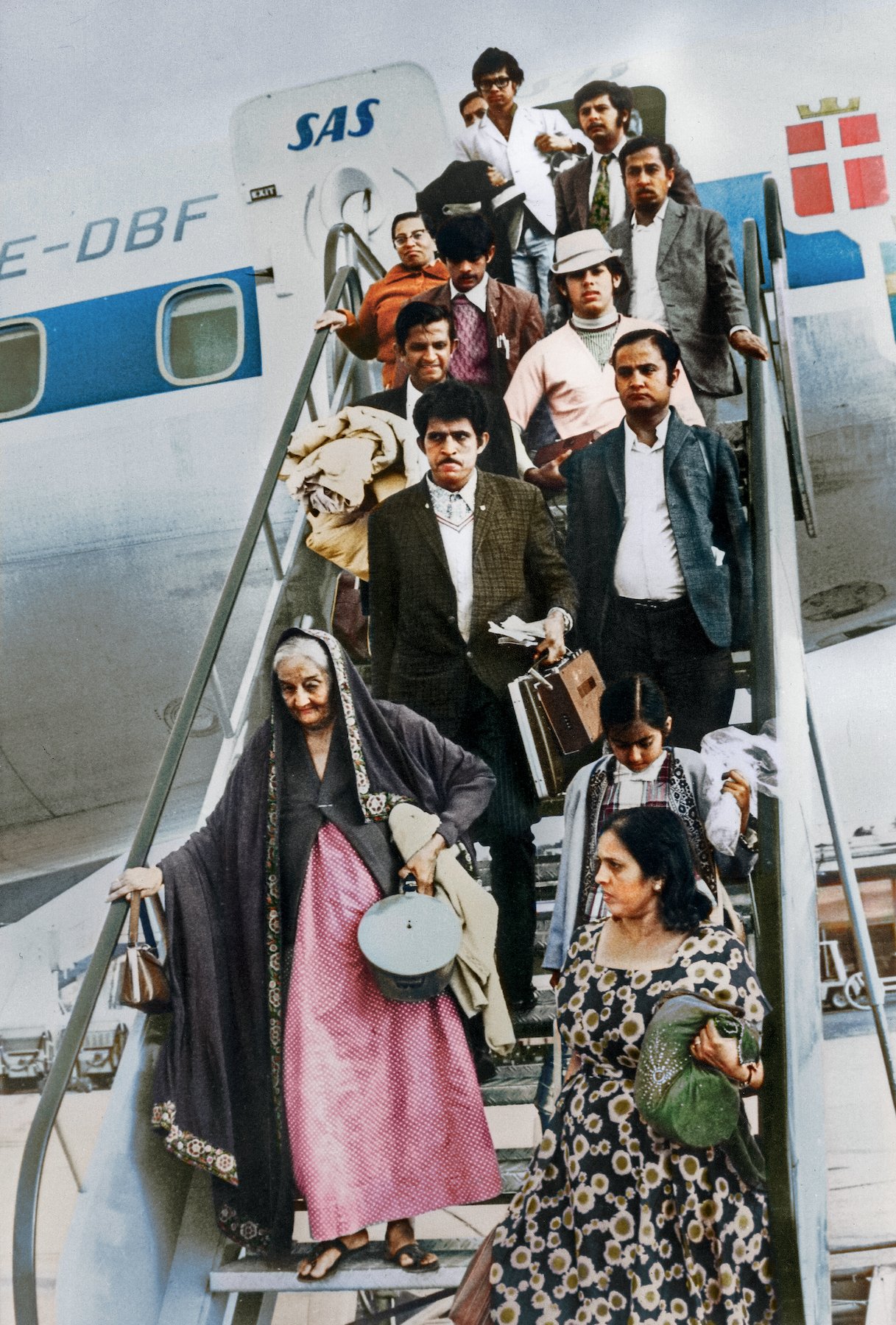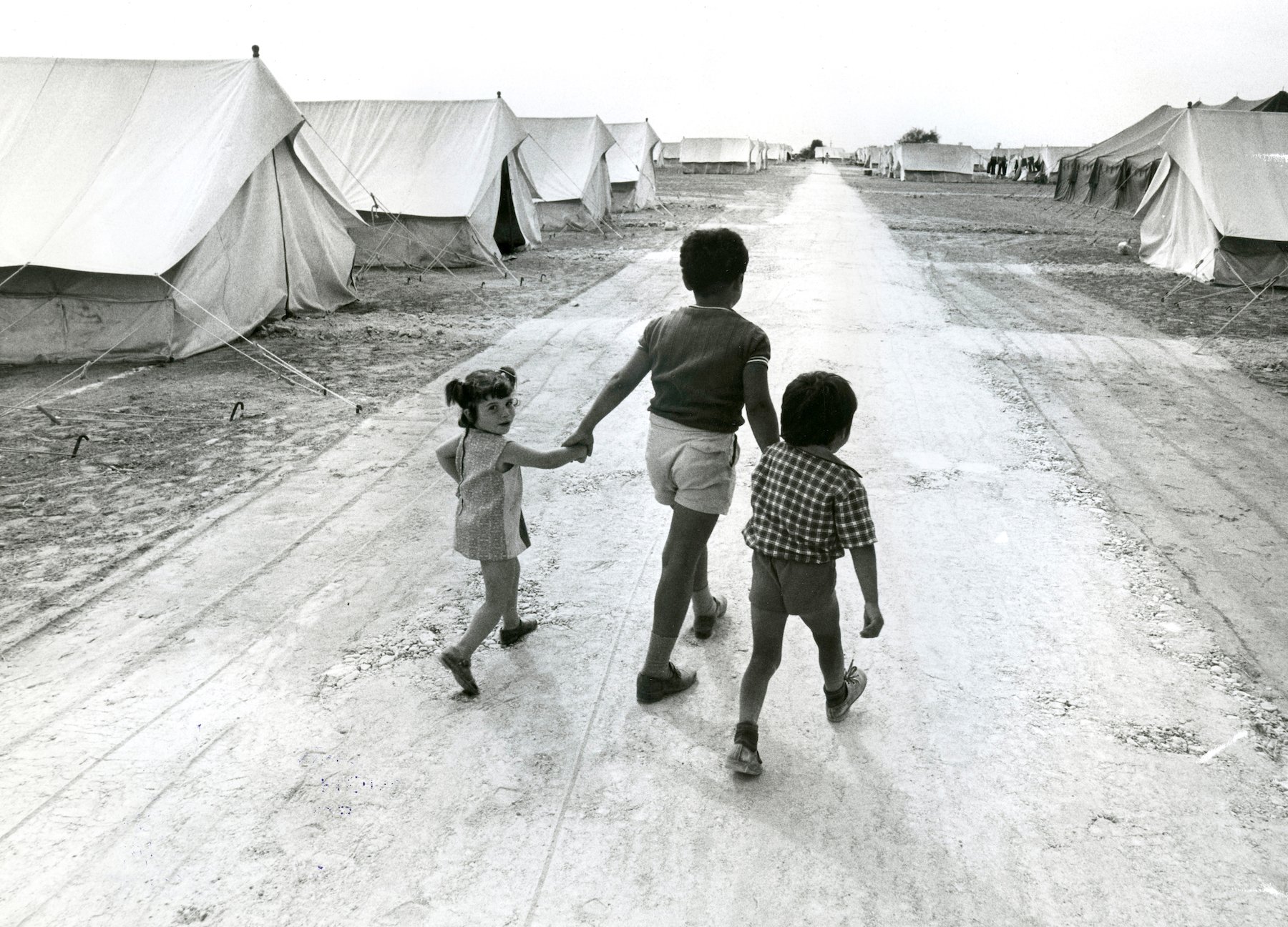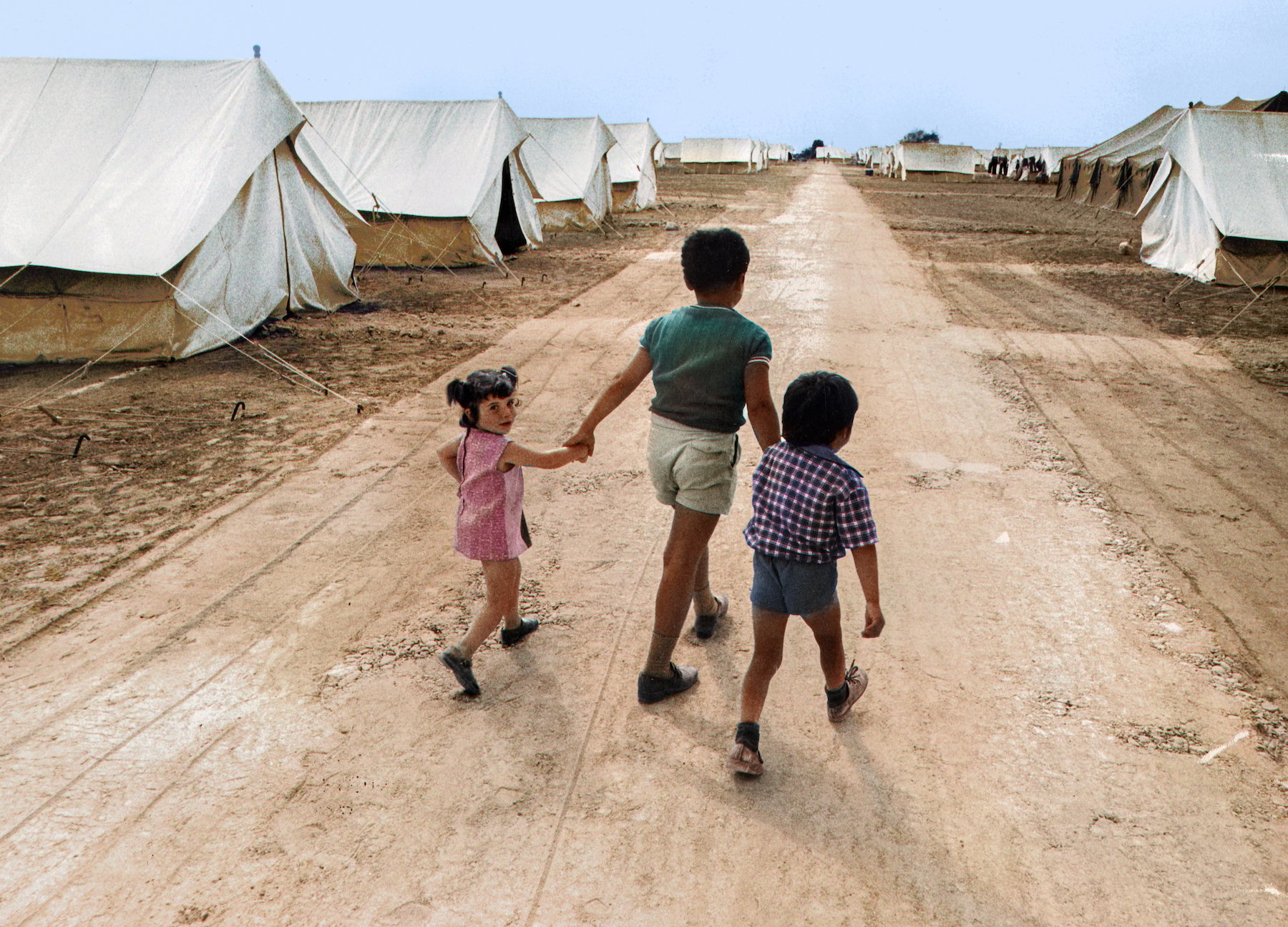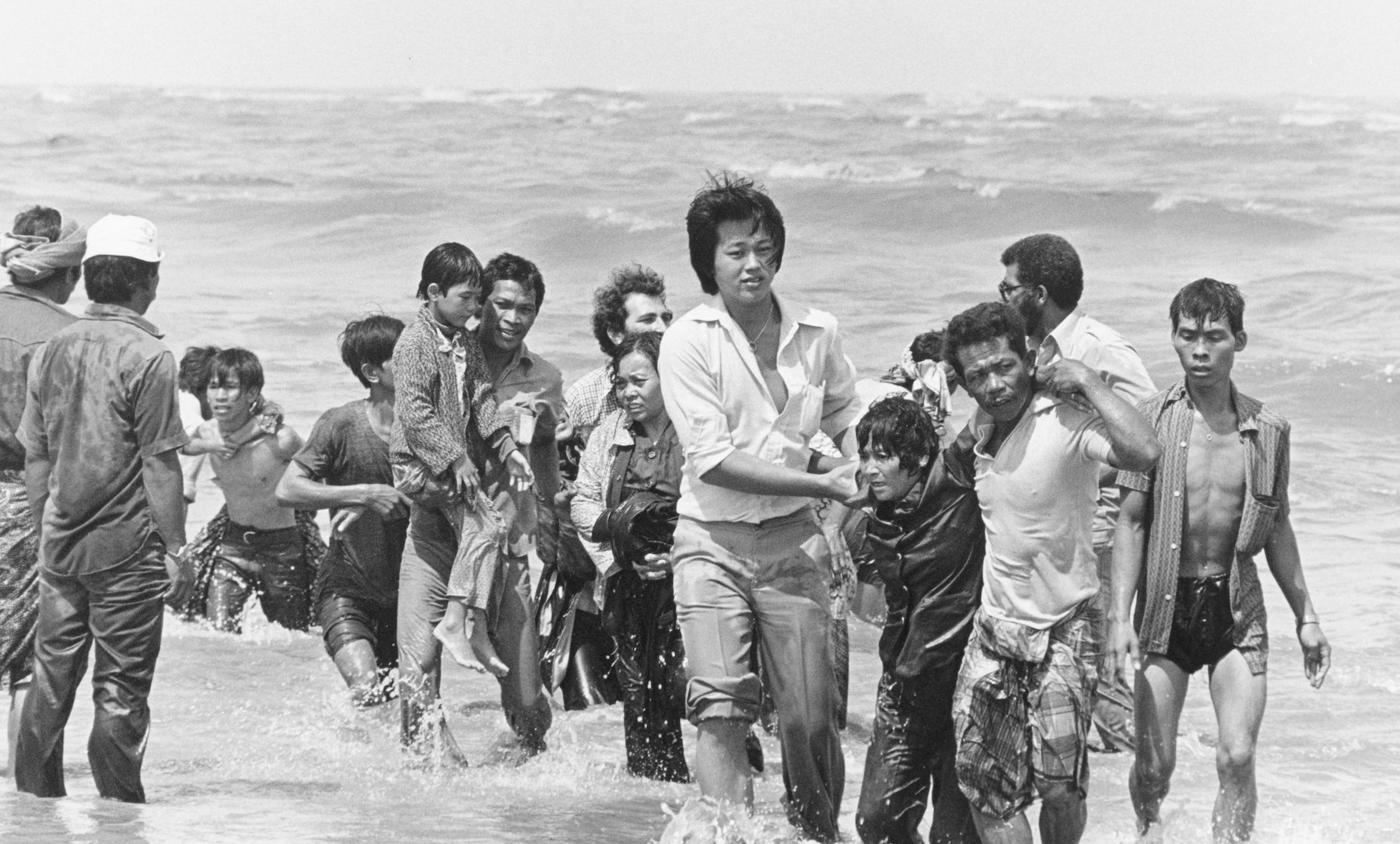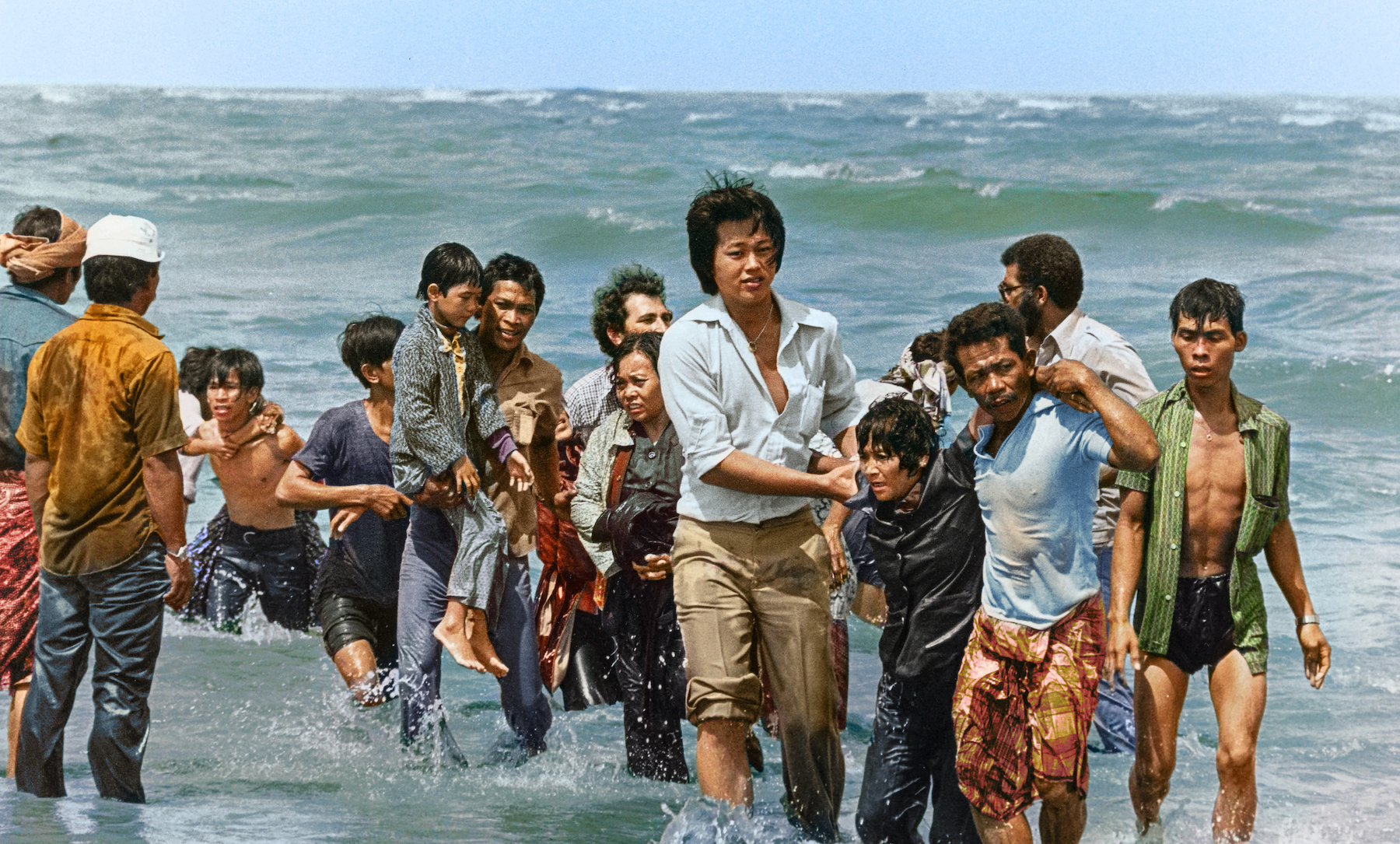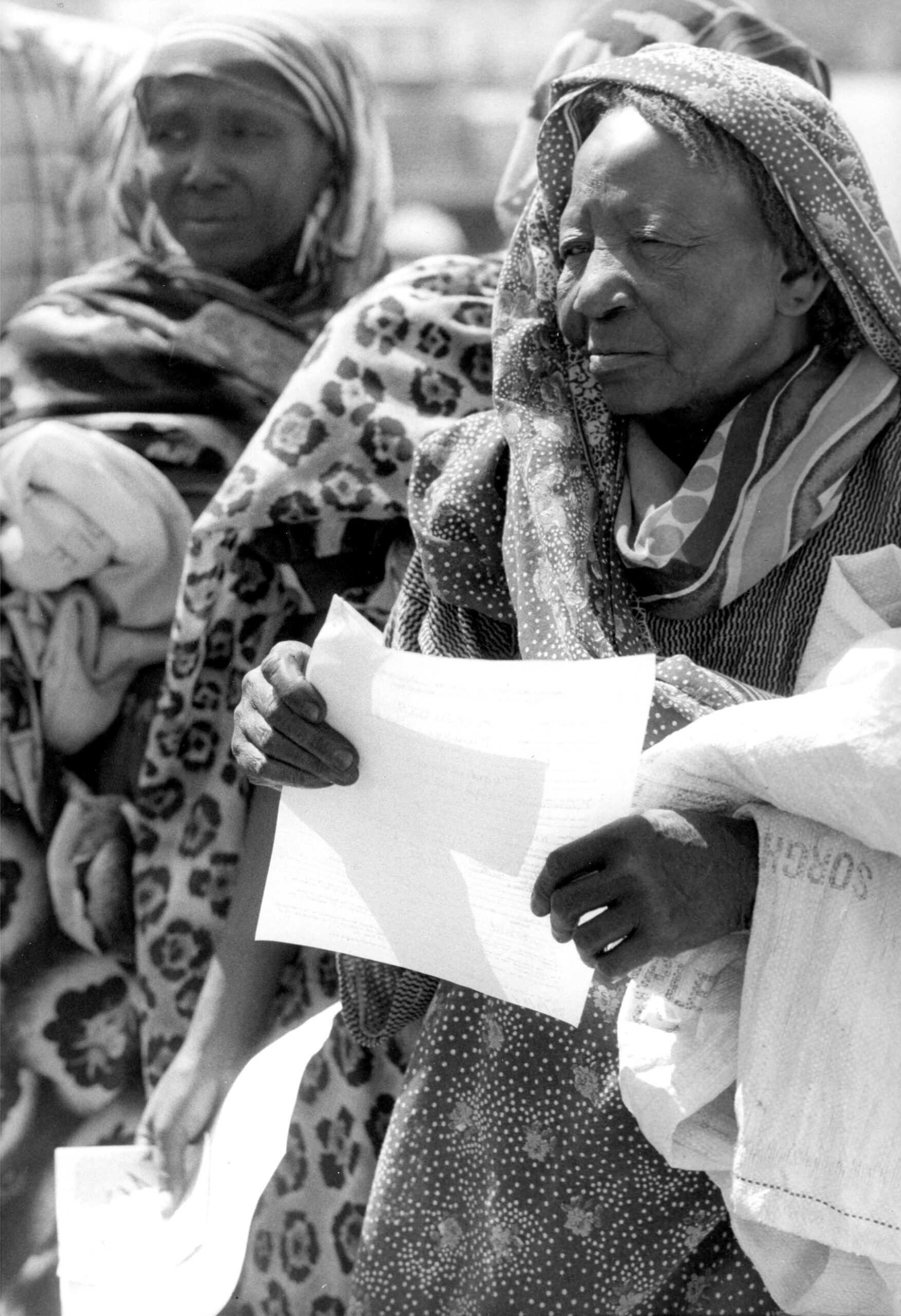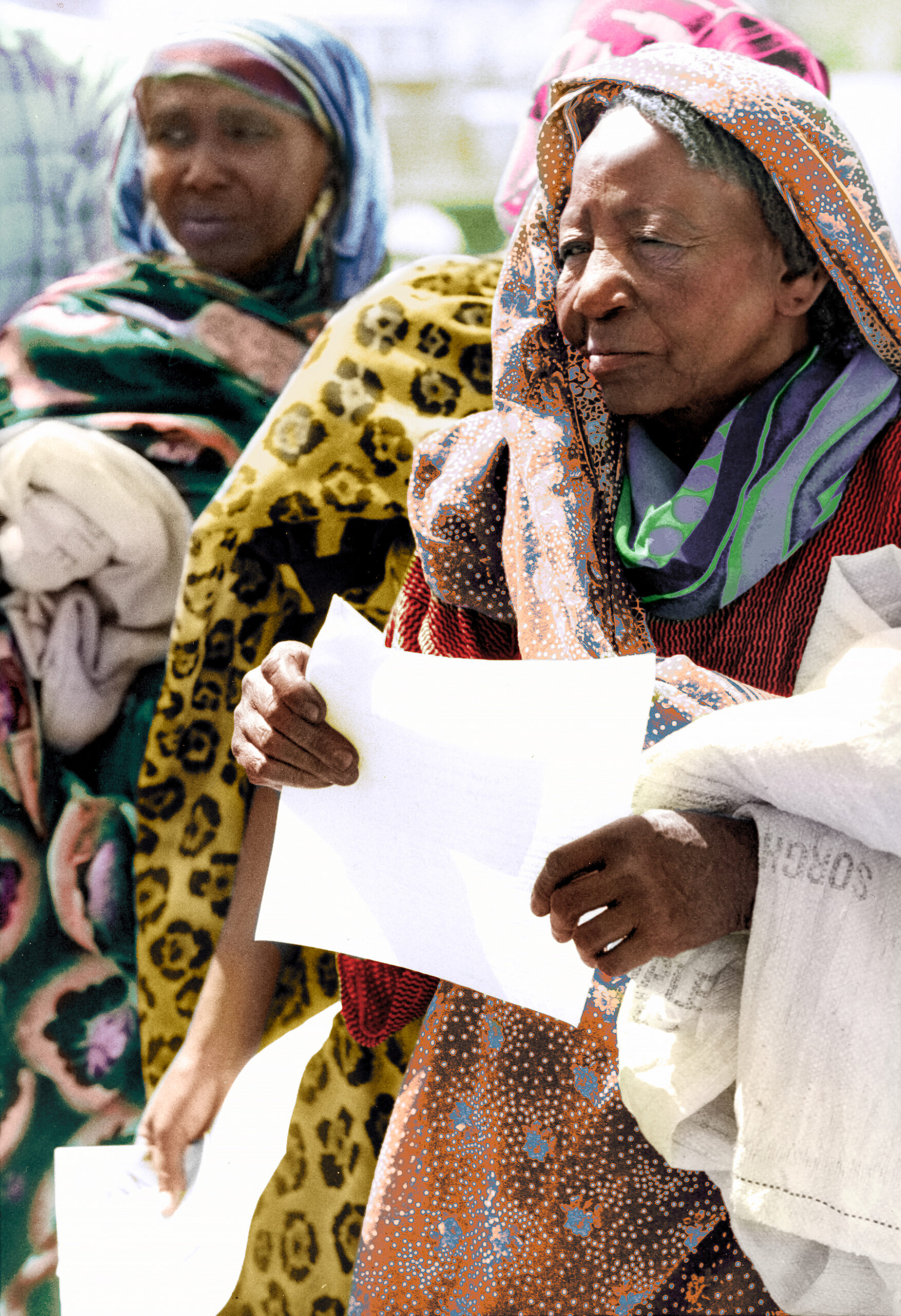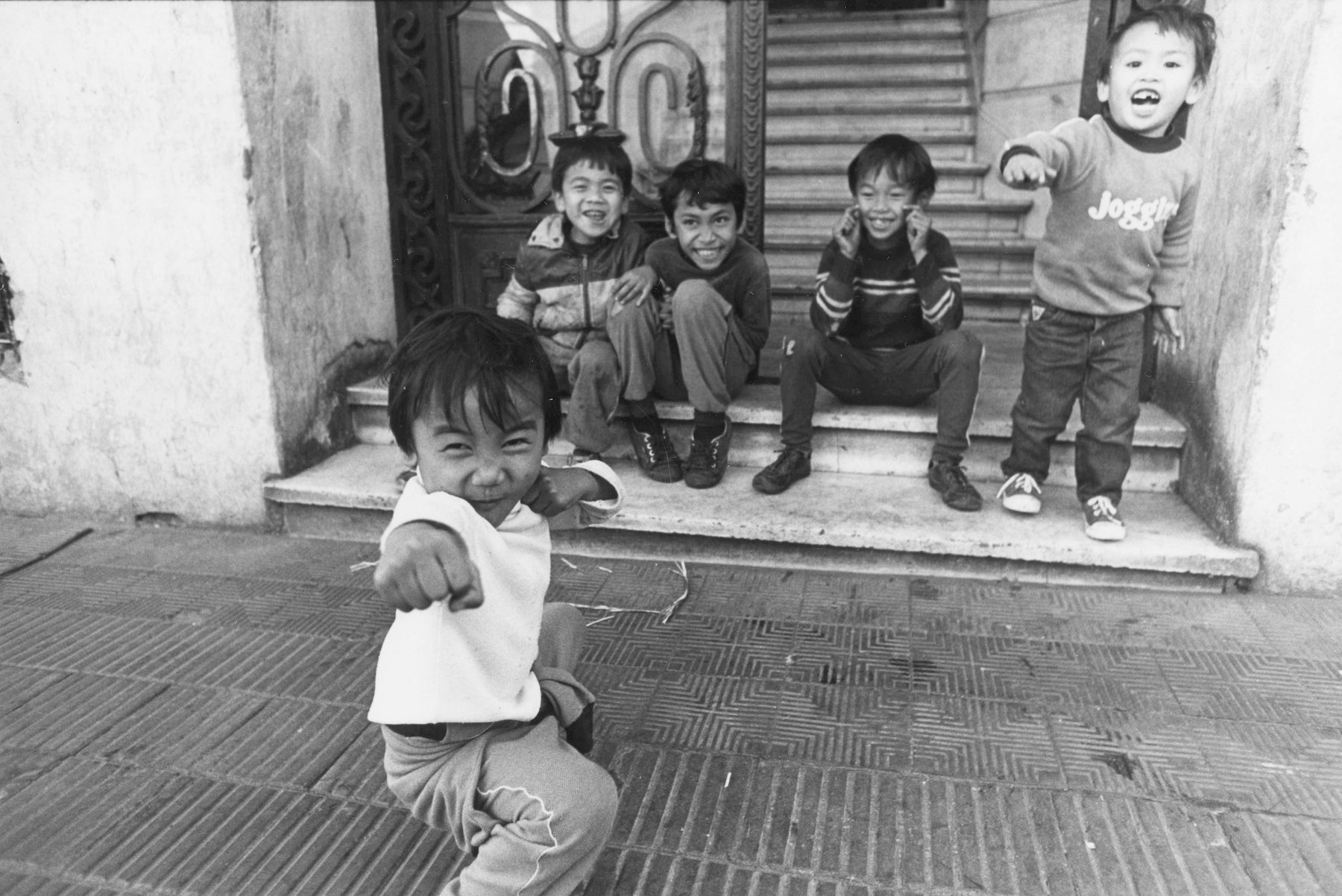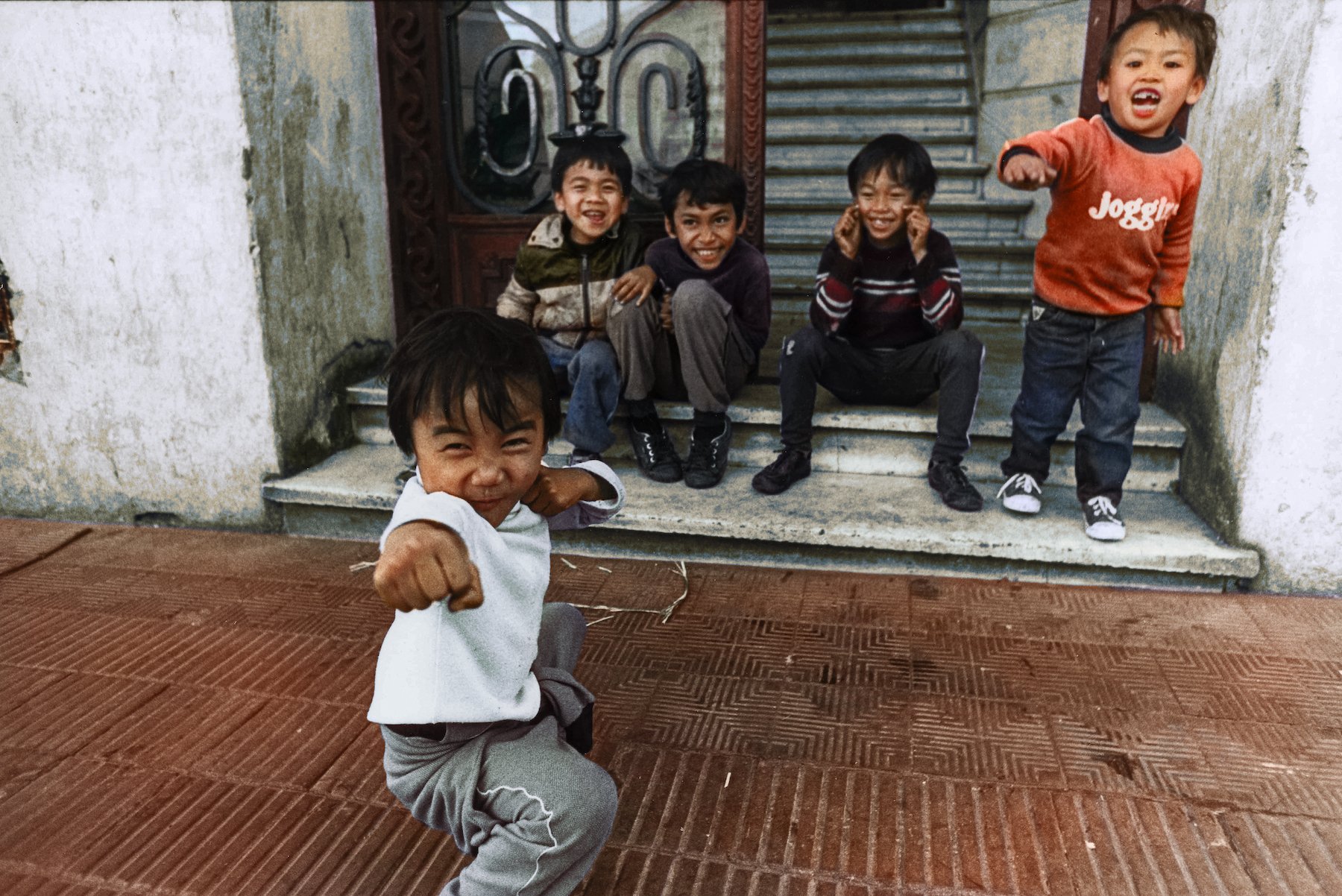The Colour of Flight
Brazilian artist Marina Amaral breathes life into images of the displaced.8 June 2022
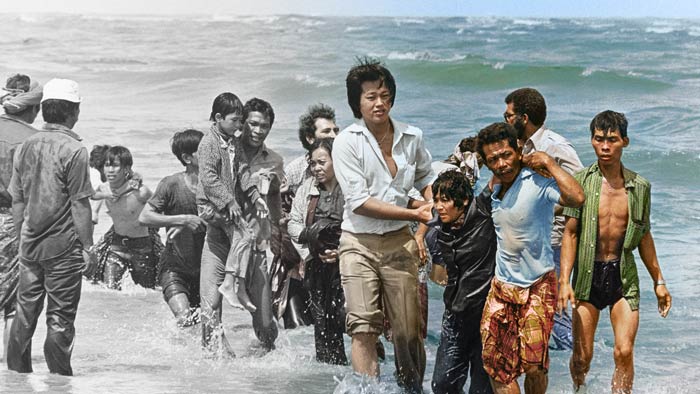
Vietnamese boat people reaching Malaysia in 1978. Photo ©UNHCR/Kaspar Gaugler. Colourization ©UNHCR/Marina Amaral
The Colour of Flight
Brazilian artist Marina Amaral breathes life into images of the displaced.8 June 2022
Vietnamese boat people reaching Malaysia in 1978. Photo ©UNHCR/Kaspar Gaugler. Colourization ©UNHCR/Marina Amaral
100 million people forced to flee. Some remain within their own countries, doing all they can to stay out of harm’s way. Others have crossed an international border, exiled by war, violence or persecution.
With global forced displacement at a new record high, it’s vital to recall that everyone has a right to seek safety – whoever they are, wherever they come from, and whenever they are forced to flee.
Over the past seven decades, UNHCR, the UN Refugee Agency, has worked with countries all over the world to help displaced people find protection and rebuild their lives. Along the way, it has gathered well over 100,000 photographs that show what it really means to have to flee your home.
To help bring some of this history to life, UNHCR reached out to the Brazilian artist Marina Amaral, who specializes in adding colour to black-and-white photographs and lets us see the past with fresh eyes. Keeping in mind the power of colour to “influence and change our emotions”, Marina eagerly set to work on a small selection of photos that are by turns joyful, poignant, uplifting, and heartrending.
Together, these images remind us what’s possible when nations ensure access to safety, act in solidarity and work for solutions.
👉🏽 Click or tap the left or right side of each image below to switch between black-and-white and colour.
1949 A camp for people displaced by the Second World War
The Second World War left millions of people homeless – in May 1945, over 40 million in Europe alone, not counting 13 million ethnic Germans who were expelled over the following months from the Soviet Union and Eastern European countries, and more than 11 million forced labourers and other displaced persons on the territory of the former Reich.
This photograph, believed to have been taken in the autumn of 1949, shows a family from Czechoslovakia who were housed at the Delmenhorst camp for displaced persons near Bremen, Germany.
They travelled to Italy in January 1950 and left a few weeks later aboard the USS General Heintzelmann to start their new lives in Melbourne, Australia.
The photo may even have been set up by the crouching man, Jaroslav Patetl, who was a photojournalist.
1950 Applying for resettlement after the war
This photograph shows forcibly displaced people in Germany applying for resettlement via the International Refugee Organization, which was created in July 1947 as a temporary body to help find solutions for the millions of post-war displaced.
The IRO had far more success with resettlement than repatriation, and the majority of the million people whom it resettled went to the United States, Australia, Israel, Canada and various countries in Latin America.
But its activities became embroiled in Cold War politics and it was succeeded by UNHCR, whose Statute was adopted by the UN General Assembly on December 14, 1950.
Photographer: unknown
1956 Hungarian refugees en route to Switzerland
The Hungarian Uprising of 1956 and its suppression by Soviet forces was UNHCR’s first experience of working with a mass exodus of refugees fleeing political repression.
The crisis also marked its transformation from an organization that dealt with the aftermath of the Second World War to one that could rise to the challenge of new, large-scale emergencies.
Tens of thousands were swiftly resettled from Austria to third countries, though some fled to Yugoslavia and others even returned to Hungary.
Photographer: unknown
How did you go about researching these images to get the right colour and feel? Some of them are from remote and long-forgotten refugee situations.
Marina Amaral: Since the photos didn’t have specific objects that would let me trace the original colours via written sources, apart from the airplane carrying Ugandan Asians to Europe [see below], I decided to take an artistic approach. There’s no hidden information in the greyscale, and sometimes research isn’t enough. This is when the artist needs to step in and make conscious choices – keeping in mind the environment, the weather, the historical period and the general mood – over which colours will be applied to the photograph.
1959 A new era of displacement: Algerian refugees in Tunisia
The Algerian war of independence, which began in 1954, was a humanitarian crisis that demonstrated how mass displacement was becoming a global challenge, not one limited to Europe. It also showed the potential for coordinated and effective international action to protect and assist refugees.
In the Algeria crisis, for instance, UNHCR worked closely with the League of Red Cross Societies, through local Red Crescent organizations.
The Refugee Agency’s support for Algerian refugees in Morocco and Tunisia, and its help with repatriation at the end of the war, marked the beginning of a much wider involvement in Africa.
Photographer: Stanley Wright
1964 Rwandan refugees await food rations in Uganda
The power struggles, ethnic tensions and communal violence that marked the end of colonial rule and the start of independence in Rwanda sparked the large-scale flight of Rwandan Tutsis in the early 1960s – events that would find a horrifying echo three decades later, when those simmering tensions erupted into genocide and a massive humanitarian disaster.
This image shows Rwandans waiting for the distribution of rations at a refugee centre in Uganda’s Oruchinga Valley.
Photographer: William McCoy
1969 Assyrians seek refuge in Lebanon’s Bekaa Valley
The Assyrian people are an ethnic group who traditionally inhabited parts of Iran, Iraq, Syria and Türkiye. A predominately Christian minority, they have had to flee conflict and persecution on multiple occasions over the past century.
By the late 1960s, thousands of Assyrians – many of them stateless – had found refuge in Lebanon, including this mother and child living in a housing settlement for Assyrians near Zahlé, in the Bekaa Valley. Regrettably, many would be forced to flee again after Lebanon’s civil war erupted in 1975.
Photographer: Stanley Wright
You’ve said that through your work you are “breathing life into the past”. How is it that colour can open our minds in this way?
Marina Amaral: Scientific studies have proven that colours have the power to influence and change our emotions. I think this is especially clear when we compare black-and-white photos with colour versions. The original has immense historical and artistic value, and will never be replaced. However, the black and white distances us from the reality being portrayed, even if unconsciously. Of course, not everyone will react the same way, but generally speaking this holds true.
Once you break down the emotional barriers, it is much easier to relate to that subject or person, which completely changes our understanding of the story. It stops being just rational and starts to have an emotional impact as well.
1969 Angolan refugees find safety, and a future, in Botswana
In the 1960s, UNHCR’s mission expanded well beyond the boundaries of Europe, notably to sub-Saharan Africa as the colonial era ended.
As Angola’s war of independence intensified in 1967–68, around 3,300 Hambukushu people fled across the border to Botswana. The refugees shown here are waiting to receive daily rations in the Etsha settlement.
Ultimately, the fortunes of the Hambukushu in Botswana would prove to be one of the most successful refugee integration stories of the 20th century.
Photographer: E. Schlatter
1972 New home in Austria for Asians fleeing Uganda
In August 1972, the military despot Idi Amin told the country’s community of Ugandan Asians, who had been living there since the turn of the century, that they had only 90 days to leave.
Many held British passports and were consequently resettled in the United Kingdom, but thousands more were left effectively stateless.
UNHCR appealed for help with resettlement, and Austria was among a number of states to take them in. Here, a few are arriving at Vienna airport.
Photographer: N. Schuster
1974 Greek Cypriot refugees on a divided island
Cyprus became an independent republic in 1960 but tensions between its Greek and Turkish communities turned violent. In July 1974, Turkish forces invaded northern Cyprus in response to a Greek military coup that aimed to unite the island with Greece. The island remains divided to this day.
This photo shows Greek Cypriot children in a refugee camp in Strovolos, a municipality of Nicosia, which at the time had a population of around 1,600.
Photographer: Jean Mohr
When you were looking at these photographs of refugees, what struck you about them – and how did that influence your approach?
Marina Amaral: I think what affects me the most when working on photographs that portray such sensitive subjects is the realization that, although that specific photo may have been taken decades ago, not much has changed since. Spending so many hours working on each photo and “getting to know” better the people I’m colourizing, although in an abstract way, is not easy. But this emotional attachment is important; otherwise I’d be a robot and not an artist.
1978 Vietnamese boat people reaching Malaysia
The mass exodus of Vietnamese refugees began after Saigon fell to Communist forces in 1975. Despite the dangers, including the threat of pirates, tens of thousands of so-called boat people took to the sea.
This image shows members of a group of 162 refugees who arrived in Malaysia in December 1978. Other photographs taken on the same day show their vessel approaching in the distance – and then sinking a few metres from shore.
Photographer: Kaspar Gaugler
1981 Repatriation of refugees to Chad
When years of armed strife reached Ndjamena, the capital of Chad, in 1979, hundreds of thousands of people fled in search of safety. Many went to Nigeria, Sudan and Central African Republic, but the majority crossed the Chari River and found refuge in Cameroon’s Far North region. By 1981, Kousseri refugee camp was among the largest in the world.
Later that year, as conditions in Chad improved, UNHCR launched a large-scale operation to assist the voluntary return of some 150,000 refugees from neighbouring countries. This photo shows women at Kousseri camp preparing to go back home, a short but long-awaited journey that will take them by truck and then ferry back to Ndjamena.
Photographer: Iain Guest
1983 Young refugees from Laos in Buenos Aires, Argentina
At the end of the war in Viet Nam, which had spread to neighbouring countries, a new Communist government took power in Laos. Several thousand people, many of them ethnic Hmong who had fought alongside US forces, found themselves in grave danger once the Americans left.
Of those who fled Laos most found a home in the United States, but smaller numbers settled elsewhere, including these children in Argentina. Nearly 40 years on, we caught up with Kykeo Kabsuvan, the boy in the foreground striking a karate pose. You can find his story here.
Photographer: Alejandro Cherep

